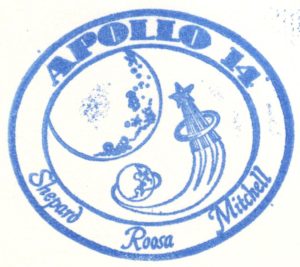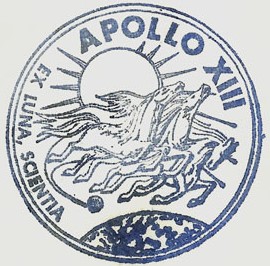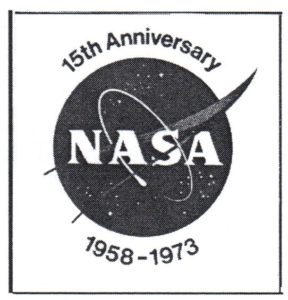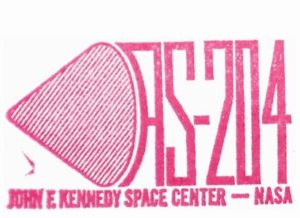This is a difficult question to answer. The Kennedy Space Center Philatelic Society (KSCPS) tried to count every impression when the first ONC was released on July 1st, 1965. The total was 7116 and there is no reason to doubt the number. Yorio wrote that of these 3000 were philatelic. Being such a round number the 3000 may have just been an educated guess. Since dealers often work by the box load and #6 envelopes come 500 to a box this could easily be accurately be represented by 6 boxes. At some point, the post office restricted sales to 5 envelopes per person. It is unclear when that happened.
Then there is a question of whether we can distinguish philatelic from non-philatelic. We can assume that an unaddressed cover is for a collector and received handback service at the post office counter. That being said, a number appear unaddressed because a pencil address has been erased or a peelable label has been removed. Could we then say that addressed covers are non-philatelic? Not really. Collectors will recognize typed addresses to Yorio, Taiani and others. In a pile of 82 ONCs Ken Havekotte sent for this monograph analysis, there were five 1st Day of Service and three were addressed to different members of the Ironworker Union local 808. Either there are a bunch of union stamp collectors of someone who was using their friends to vary the names. After distinguishing collector from non-collector for the first cachet, Yorio failed to report philatelic totals for any of the next 19 ONCs. Beginning in late 1967 he reported philatelic numbers for the 12 Apollo launches through Apollo 14 when his booklet ends.
Also during this period Eberhard Coelle, a West German space dealer, produced a catalog/price list. The ISA-Katalogue is quite precise with differentiation of cancellation type, listings of semi-official essays and colors, and inclusion of the 1967 Fire Prevention and 1970 Open House ONCs not listed in Yorio’s 1971 work. Coelle also reports totals and philatelic numbers. Unfortunately, his numbers generally appear to just be rounded off repeats from the KSCPS publication. Additionally, while Coelle’s catalog/pricelist has very detailed and useful information on postmarks he is sloppy in reporting whether a number is one of collectors or total produced for the event.
During his time as a dealer, Coelle developed a cozy relationship with Forrest “Dusty” Rhodes, Chief of the Mail & Distribution Unit at the Kennedy Space Center. Over the years Rhodes experimented with trial colors which he kept in a special box. When Coelle (and others?) came to visit the unusual items could be acquired by the space dealer “for his discerning clients”.
Where this puts alternate colors in the pantheon of KSC Officials? In every case there is an official color. In at least 8 instances there are different colors of the exact design. These could be seen as trial proofs but there is so far no evidence that printing alternate colors helped determine the final color to be used. Often the alternate was placed in tandem with the final color. The author’s conclusion is the artwork is a philatelic favor and non a pre-production intermediary.
There remains another problem. Beginning in the Apollo Program and continuing through Skylab, rubber stamps that appear at first glance as KSC Officials began to crop up. To the dismay of many collectors it turns out it is not illegal for space dealers to make copies of KSC Officials. Copying stamps and postmarks is a federal offense but creating lookalike ONCs is not. In the landmark Study of Suspect Space Covers written by Ramkissoon and Winick (2nd Ed included Paul Bulver)
According to a Postal Inspectors Report, “…the cachet was not an official indicia…” and dealers could purchase “…transparencies legitimately for use in printing commercial quantities…”. No further actions were taken against the Florida dealer. Suspect Covers page 4.9


 Alternate colors are often seen in tandem with legitimate ONCs. When seen with Cape Canaveral hand cancels the postmark may be backdated. When colors appear in alternate sized artwork the cachet is commercial.
Alternate colors are often seen in tandem with legitimate ONCs. When seen with Cape Canaveral hand cancels the postmark may be backdated. When colors appear in alternate sized artwork the cachet is commercial.
 The fact that something printed was paid for or distributed by NASA does not make it an Official. Over the years a number of “etiquette” labels have surfaced. Two labels, Apollo 7 and 8 are rightly recognized as Officials. To be an ONC there must have a direct connection to the KSC post office. Similarly, rubber stamps donated by stamp dealers that were used on mail at the Visitor Information Center at the space center do not qualify under the author’s definition.
The fact that something printed was paid for or distributed by NASA does not make it an Official. Over the years a number of “etiquette” labels have surfaced. Two labels, Apollo 7 and 8 are rightly recognized as Officials. To be an ONC there must have a direct connection to the KSC post office. Similarly, rubber stamps donated by stamp dealers that were used on mail at the Visitor Information Center at the space center do not qualify under the author’s definition.